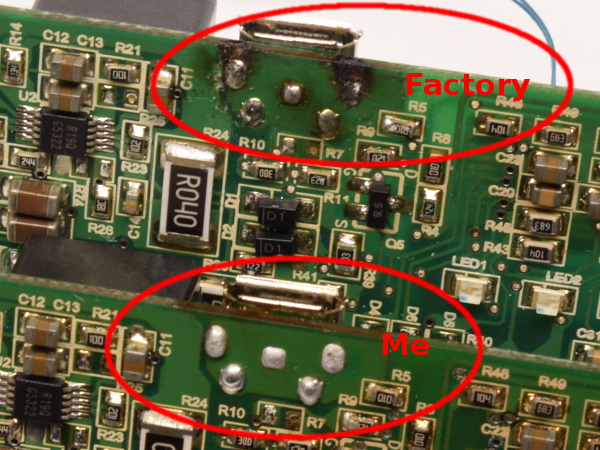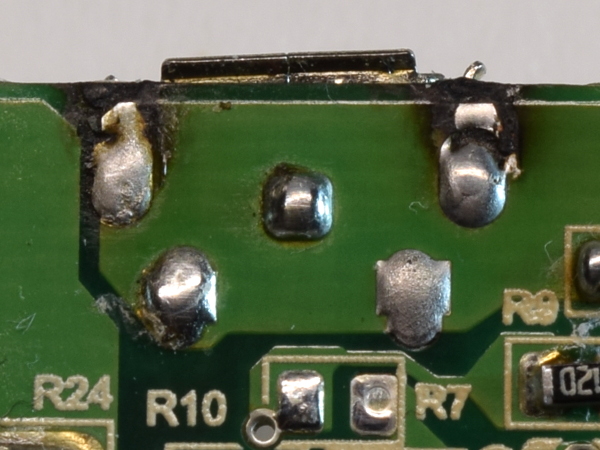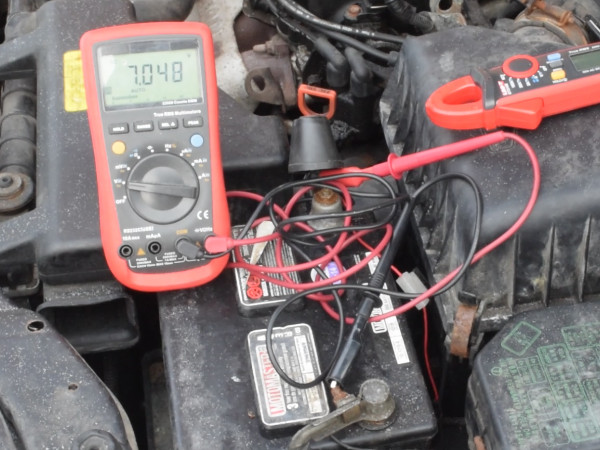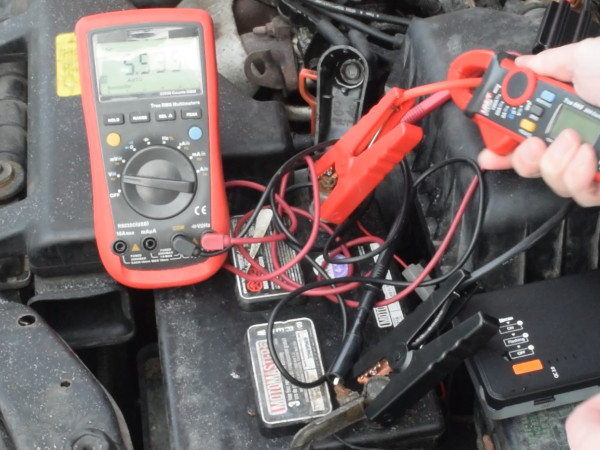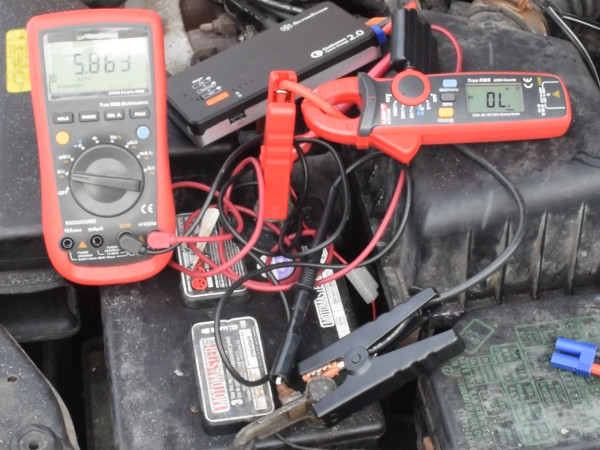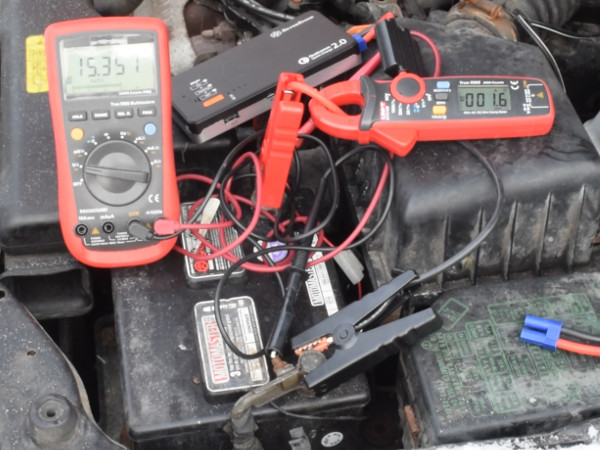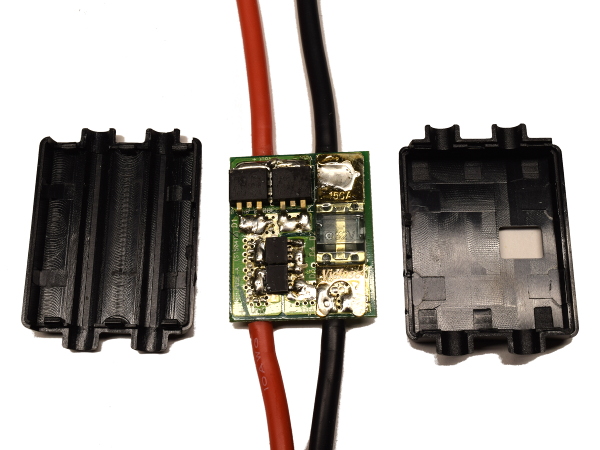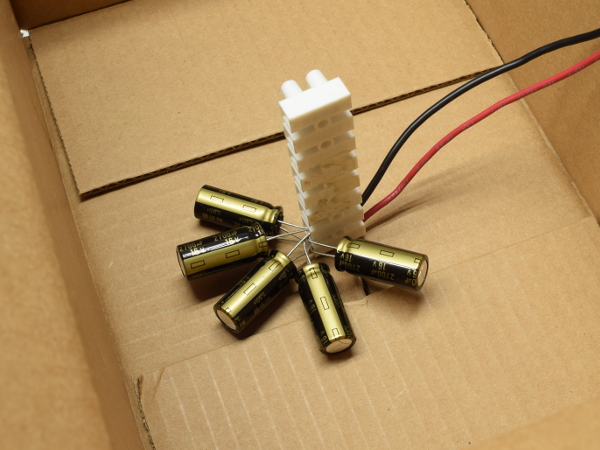Silverstone PB06 USB Power Bank Tear-Down
New Vs. Old, Under The Micro-B
I forgot to take a picture of how the second unit’s solder under the Micro-B connector looked before working on it, but as you can see, my reworked board looks much better than the “factory-new” first unit’s PCB. If I could rework my connector a handful of times using different solder, different flux, and air vs. iron without visibly damaging the PCB, I can only imagine that whoever reworked my first unit’s connector must have been under considerable time pressure to cause so much damage presumably in only one session.
MORE: SilverStone Stash Tour
MORE: Best Deals
Micro-B Re-Soldering, First Unit
At first, I was going to leave my first PB06 as-is to see how long its Micro-B connector would hold. After wrangling falling parts for too many minutes while attempting to put it back together, I changed my mind and preemptively fixed the connector to spare myself the hassle later. Now its Micro-B soldering looks half as horrible on the bottom, while its adhesion to the shield up top looks every bit as good as my reworked second unit.
Although two units may not be a statistically significant sample size, the nature of the Micro-B soldering issues I ran into is cause for concern, making it difficult to recommend the PB06 at this point.
MORE: SilverStone Stash Tour
MORE: Best Deals
Finding A Dead Battery
The first step of testing the PB06’s jump-start capability is finding a car with a dead battery. My starter failed on me back in December, leaving the car stranded in -20°C weather for a few days while I repaired it. When I re-installed my starter, I discovered that my trunk switch had been stuck on, leaving me with a very dead frozen-over battery that wouldn’t hold a charge beyond 8V, indicating that two of its six cells must have an internal short-circuit or high self-discharge rate, possibly from cracked separators or internal walls.
About a month later, I decided to jump-start my car one last time for a battery swap. Here, my car has been sitting for two days since the last time I started it, and the battery already dropped to 7V.
Get Tom's Hardware's best news and in-depth reviews, straight to your inbox.
MORE: SilverStone Stash Tour
MORE: Best Deals
Killing It Dead
Just to make sure that the battery was dead, I tried cranking out of curiosity and, unsurprisingly, nothing happened. A bad camera angle and glare from the sky prevented me from catching a clear reading on my video recording, but I could see it drop into the 4V range. While hooking up the PB06, I unintentionally nudged the meter and could see the battery voltage jump back and forth between 5.3V to 6.5V as car electronics came out of under-voltage lock-out only to die again from low voltage when the battery couldn’t supply enough current to keep them alive.
Batteries don’t get much deader than this.
MORE: SilverStone Stash Tour
MORE: Best Deals
Hooked Up
Immediately upon connecting the PB06 to its jumper cables, the terminal voltage rose to 12.2V with only 0.7A going out, meaning that the dead battery was accepting very little charge. That’s another sign it's shot. A healthy lead-acid battery drained to 9V would be pulling over 10A for at least a few seconds as it rebuilt its surface charge.
While I have already started my car using the PB06 many times, those attempts were around 0°C. This is the first time I'm doing so at -12°C (10°F) after a -20°C night. As you may have noticed in the bottom-right corner, I had the second PB06’s jumper cable ready to go in case a single PB06 turned out to be insufficient.
MORE: SilverStone Stash Tour
MORE: Best Deals
Cranking It Up
My suspicion that one PB06 might not be enough to get the car started was almost proven correct: the lowest voltage reading I caught on video was 5.8V on the first compression stroke, which is barely above the electronics’ cut-off voltage (engine sensors typically require 5V to work). Cranking picked up after that first labored stroke and the battery voltage bounced back up to 7.3V.
Unsurprisingly, my little 100A clamp immediately displayed an overload, telling us that the PB06 provided at least that much current.
MORE: SilverStone Stash Tour
MORE: Best Deals
It’s Alive!
Three seconds of cranking later, I got somewhat of a rough start, which quickly smoothed itself out once the alternator kicked in at 15.35V. Surprisingly enough, the 12.6V LiPo pack is pulling only 1.6A, though that could just be the clamp-meter’s zero getting scrambled by the overload.
Since 15V is higher than the lithium battery’s maximum voltage, I would have expected the current to be much higher, which means I must have overlooked something. Fortunately, I think I know where to look...
MORE: SilverStone Stash Tour
MORE: Best Deals
Mystery Box No More
What’s inside the fuse box on the jumper cables? Aside from a 150A 32V Vicfuse in line with the negative wire, we find a pair of PFC 60L45CTB Schottky diodes providing a one-way path from the PB06 to the positive battery terminal clip and two PFC 20L45Ds set up to blow the fuse should the battery clip polarity be reversed. On the back of the board, four more 20L45Ds shadow the top side’s pairs. All forward diodes combined, we have a total rated capacity of only 160A and just shy of 100W of power dissipation, assuming a forward voltage of 0.6V. You definitely don’t want to crank on these for more than a few seconds at a time.
MORE: SilverStone Stash Tour
MORE: Best Deals
Voltage Drop Setup
I was curious to find out where the voltage drops between the lithium battery and car terminals were coming from, so I disconnected my new car battery and set up an experiment to find out. At the bottom, resting on the frame, you can see part the PB06’s bare lithium battery and its booster cable to the left. The lithium battery’s voltage is monitored by the black meter via the battery’s main board connector. The white meter is connected to the jaws’ cable crimps to measure voltage at the jaws. Lastly, the red meter is connected to the battery terminals to measure voltage seen by the car.
What’s inside the cardboard box? Only five 2700µF capacitors to help filter the car’s electrical system while the battery is disconnected so it doesn’t fry itself.
MORE: SilverStone Stash Tour
MORE: Best Deals
Voltage Drop Results
Averaging my readings over two seconds of crank time to compensate for my meters’ slow and mismatched update rates, I got 8.55V at the lithium battery, 7.26V at the clip crimps, and 6.9V at the car terminals. A 1.3V drop across the cables is exactly in line with the 0.6V diode drop and 200A x 0.0035Ω (one meter of #10) wiring resistance, while 0.35V between the jaws and car terminals is 0.175V per clip, about half what I expected.
In the end, the lithium cells’ internal resistance and chemistry turned out to be the single biggest voltage drop by far, doubling everything else combined. Still, reducing losses by 0.5V using #8 gauge wires and double-sided jaws could provide ~50A more cranking current.
MORE: SilverStone Stash Tour
MORE: Best Deals
-
Daniel Sauvageau For those wondering how that third unit turned out, its 12V cover is in-between the first two: tight enough not to slip out on its own, but not snug enough to stay put completely either. So far, the micro-B connector hasn't broken off from mild intentional abuse.Reply -
alextheblue For those who want jump-starting first, with a dash of USB charging, Noco's Genius Boost GB40 is solid. The GB40 is rated at 1000A "3 seconds" which falls somewhere between cranking and peak amps. They have even more powerful options too. They're pricey unless you find a good deal. Other good-looking (brand and otherwise) options I've run across that prioritize jump starting but still have decent USB 5V capability:Reply
- Omega's 80600. 350/700A peak. I've used this model. Also sold under Pro-Lift I-8006 series. 6000 rated mAh 5V capacity IIRC.
- Omega's harder-to-find 81100 unit. 400/800 amps - rated 11000 mAh
- Ravpower's RP-PB053 600A peak unit. 18000 mAh "raw"/unrated capacity.
- Ravpower's RP-PB063 1000A peak unit. 14000 mAh - rated?
- Bolt Power's D29 450/900A peak unit. 18000 unrated mAh.
- Wagan's 7506 V10 "400"/700A peak unit.
Of those probably the most interesting units is Ravpower's RP-PB063. It's still geared towards jump starting but it has faster charging than any of the other ones above - one of its USB ports even supports QC 3.0. -
Olle P Overall a nice in-depth review!Reply
Two oddities though:
1. This is NOT a 10Ah battery pack. Since the cells are connected in series it's just 3,3Ah.
2. The ripple is measured at ~9V. Shouldn't the USB output be 5.0V? -
Daniel Sauvageau Reply
Most power banks report the total combined rating of their lithium cells. Travel restrictions don't care if the cells are in series or parallel, all they care about is the total Wh or Ah capacity of the underlying cells. For the end-users, 50Wh is 50Wh regardless of series or parallel as well. When you buy a 5.2Ah power bank, you usually find a pair of 2600mAh cells in parallel but this only gives you ~4V, so you need a boost converter to get that up to ~5.1V. Since the PB06's battery voltage is 12.6V, it uses a buck regulator to bring that down to 5V or 9V instead.19542706 said:Overall a nice in-depth review!
Two oddities though:
1. This is NOT a 10Ah battery pack. Since the cells are connected in series it's just 3,3Ah.
2. The ripple is measured at ~9V. Shouldn't the USB output be 5.0V?
I suppose I should have tested at 5V too instead of 9V Quick Charge. Same inductor and switching frequency though since all the QC voltage selection chip does is change the switching regulator's feedback voltage divider, so ripples would still be quite significant at about half as much. -
Olle P Reply
There's a HUGE difference between watthours (stored energy) and amperehours (battery capacity), since the former takes the voltage into account.19543501 said:
Most power banks report the total combined rating of their lithium cells. Travel restrictions don't care if the cells are in series or parallel, all they care about is the total Wh or Ah capacity of the underlying cells. For the end-users, 50Wh is 50Wh regardless of series or parallel as well.19542706 said:1. This is NOT a 10Ah battery pack. Since the cells are connected in series it's just 3,3Ah.
The package clearly states 10 Ah, which it's not.
It's 3.3 Ah, 36 Wh.
